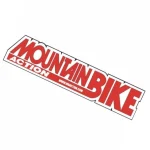Product Test: RockShox Boxxer World Cup Fork

RockShox Boxxer World Cup Fork
The Fastest Fork in History
The Boxxer has handled front suspension detail on World Cup downhill bikes for almost as long as the sport has been around. The Boxxer has contributed to 66 World Cup wins. It’s also been through countless redesigns and updates over the years. This version is the current top-of-the-line downhill offering from RockShox. When you’re a sponsored athlete, it’s easy to say go for it. When you’re a privateer, it’s a little tougher to come up with the scratch to run such a high-dollar front end.

Tech features: The Boxxer World Cup is RockShox’ premier downhill fork. The dual-crown construction uses 35-millimeter upper tubes. It sports a Solo Air spring with air-volume adjustment for bottom-out control and long-travel-specific Mission Control DH damping with high- and low-speed rebound and compression adjustments. It features a 1 1/8-inch straight steerer tube, 20-millimeter Maxle Lite DH axle, post-mount brake tabs and a Keronite coating on the lowers. Keronite involves a plasma electrolytic process that RockShox uses to save a claimed ounce off the already lightest-in-class Boxxer fork. RockShox claims the coating is also more durable than the standard finish. Our fork weighed 6 pounds with an uncut steerer and retails for $1700. RockShox can be contacted at (312) 664-8800.

Field test results: The fork installed easily on our Turner DHR test bike. The Boxxer World Cup comes with two different crowns in different heights. They are intended to accommodate different head tube sizes. Be sure to check out the technical info on SRAM’s website to determine which crown is right for your bike. Both crowns feature a direct-mount stem option that allows the rider to keep the front end low and stiff. The Maxle Lite DH axle is much quicker and more user-friendly than other pinch-bolt-style, 20-millimeter designs. Once it was installed, we went straight to the setup. We found the 85-psi recommendation on the air-spring guide to be much too high. We dropped the pressure to 65 and had optimal 30-percent sag. We ran the compression damping in the middle of its range to start, and then slowly increased the low-speed compression to resist pedal bob and brake dive.
Bump compliance: The Solo Air system allows the spring to be tuned perfectly for the rider’s weight, riding style and terrain. This is certainly an advantage over coil-sprung forks that require a rider to estimate his proper spring weight and then use the damper for fine-tuning. The bottom-out control is also a nice feature, allowing the rider to tune the spring curve from linear to progressive. The small-bump compliance is better than previous generations’ long-travel air forks. It approaches the velvety feel of a coil, but it is not there yet. For this fork, ultra-plush travel takes a back seat to the traits prized by the race crowd, such as adjustability, damper performance and weight savings.

Damping controls: This is a race-oriented fork. It’s meant to be tinkered with to find the settings that shave seconds off of the course time. As a result, the fork’s adjustment range is huge, making it is easier to get lost than find the perfect setting. It’s best to write down a base setting that works for your weight and style so that you always have settings you can migrate back to if you tinker too much. The beginning and ending stroke-rebound control are excellent at delivering front-wheel traction. We set the beginning stroke fairly fast and the ending stroke slightly slower. This allows the fork to stay connected to the trail over chatter and high-speed sections without bucking the rider on larger impacts. The high- and low-speed compression dampers work well with the air spring to deliver smooth, ground-leveling compression. The adjustment range works well to accommodate any rider. The low-speed compression damper is strong and provides a solid pedaling platform. The Boxxer World Cup is the perfect fork for the serious downhill racer, but it comes at a price. The performance is first-rate, but what really stands out are the infinite adjustability and remarkable weight. If your main concern is the smoothest suspension, or you are on a budget, there are better options. If you can justify the price and will use the adjustments to find your perfect suspension feel, go for it.

Reprinted from the January 2012 issue. Like us on Facebook





